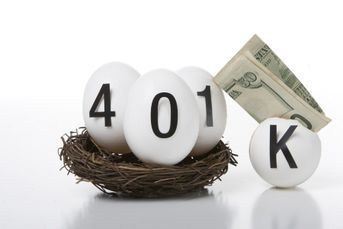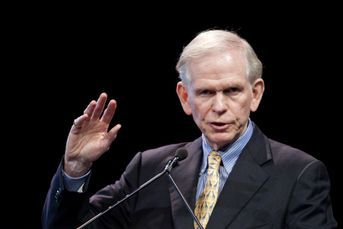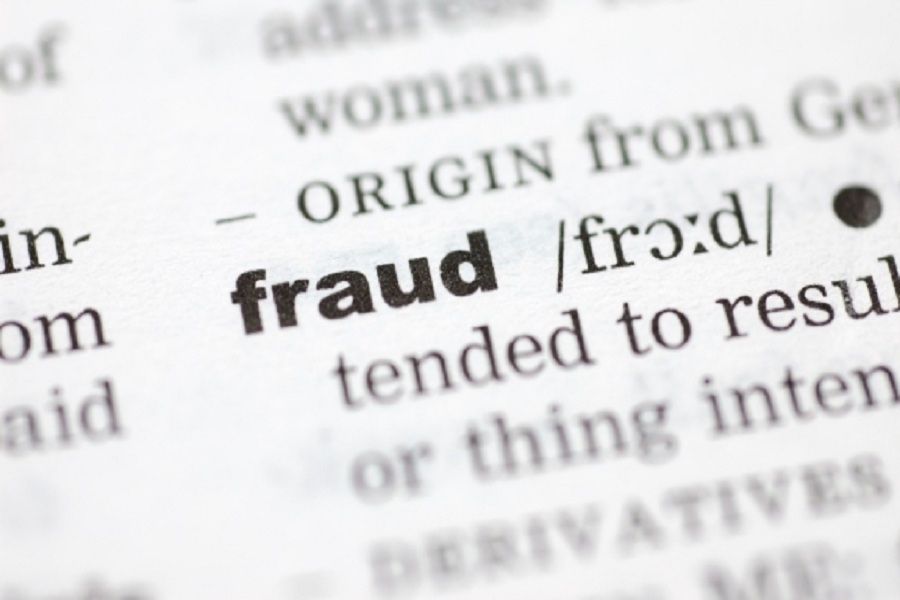Bad call by Gross on tapering hits Pimco Total Return
The Bond King misjudged the timing and impact of the Fed's plan to cut back its asset purchases, sending Pimco's flagship fund to its biggest drop in almost two decades. The call rippled out to other big Pimco funds.
Bill Gross, the money manager known as “The Bond King,” misjudged the timing and impact of the Federal Reserve’s plan to scale back its asset purchases in 2013, spurring the Pimco Total Return Fund’s (PTTRX) biggest decline in almost two decades.
The billionaire’s mistake was echoed by the largest funds at Pacific Investment Management Co., including non-traditional bond offerings designed to shield investors from interest rate moves. Pimco mutual funds with more than $10 billion in assets on average trailed about two-thirds of peers in 2013, according to data compiled by Bloomberg. Only two of the 11 largest funds from the firm beat more than half of their rivals last year.
“When you take a stand, you heighten the business risk when you are wrong,” said Joshua Emanuel, chief investment officer of Elements Financial Group, who oversees $450 million.
Pimco, led by chief executive Mohamed El-Erian and Mr. Gross, had record redemptions last year in the $244 billion Total Return Fund, which trailed 64% of peers and fell 1.9% in 2013 for the biggest loss since 1994. The Barclays U.S. Aggregate Bond Index declined 2% because of the Fed’s tapering program as the S&P 500 surged 30%, prompting investors to flee traditional bond funds.
The $2 trillion Pimco is counting on products such as its Unconstrained Bond Fund (PUBAX) to draw investors seeking to limit losses from bonds amid signs the three-decade rally in fixed income is coming to an end. While the funds have the flexibility to navigate across the fixed-income spectrum, they weren’t able to avoid losses because they’re guided by Pimco’s world view on everything from the global economy to interest rates.
INCREASED IMPORTANCE
Under Mr. El-Erian, who shares the title of chief investment officer with Mr. Gross, Pimco five years ago started a push to diversify beyond core bond holdings into equities, exchange-traded funds and products that can invest across asset classes. Pimco’s alternative offerings are especially important to the firm as investors pulled $73.2 billion through November last year from U.S. intermediate-term bond funds, the most popular investment choice for industry clients, according to Morningstar Inc.
Mr. Gross, 69, named fixed-income manager of the decade in January 2010 by Morningstar, handles more money than any other bond manager in the world and has a net worth of $2 billion, according to the Bloomberg Billionaires Index. He keeps the attention of investors through a combination of performance, monthly commentaries and television appearances and is known to move markets with his calls on the economy. Those calls didn’t help investors last year as the Total Return Fund lagged behind peers by the most since 2011, when Mr. Gross trailed 75% of rivals after missing a rally in Treasuries.
Investors in the first 11 months of 2013 pulled $36.9 billion from Mr. Gross’ Total Return Fund, causing it to lose its title as the world’s largest mutual fund in October to the Vanguard Total Stock Market Index Fund (VTSMX). Pimco as a whole had $39 billion in net redemptions during the third quarter.
Other Pimco funds that trailed peers last year include the $28 billion Unconstrained Fund (PUBAX), which fell 2.6%, behind 85% of similarly managed funds, and the $31 billion All Asset All Authority Fund (PAUAX), which dropped 5.5%, trailing 99% of rivals, according to data compiled by Bloomberg.
BAD BETS
Pimco was hurt in 2013 by wrong-way bets on U.S. Treasuries, inflation-linked bonds and Brazil. The firm concluded in its annual investment forum in May that the U.S. economy had not reached “escape velocity,” and that growth over the next three to five years would average not much more than 2% a year. What it didn’t anticipate was that in May, Federal Reserve Chairman Ben S. Bernanke would raise the possibility that the central bank might scale back its bond-buying program if growth picked up.
Douglas Hodge, Pimco’s chief operating officer, in a December interview called the taper a “five-letter word,” and said the firm’s holdings in longer-dated bonds ahead of the Fed move “cost us.”
Co-founded by Mr. Gross in 1971, Pimco holds a secular forum at its headquarters once a year to debate and identify the key economic themes over the next three to five years that will shape its investment decisions. The forum lasts three days and is attended, either in person or via video conference, by the firm’s more than 700 investment professionals. Three times a year, Pimco also holds cyclical forums to help guide portfolios’ strategies in the shorter term.
Mr. Gross, in a December interview posted on Pimco’s website, said a model portfolio established by the firm’s investment committee is the driving force behind the positioning of its funds.
“There is only so much leeway the portfolio managers have here and the model dominates,” said Mr. Gross.
The investment committee, led by Mr. Gross and Mr. El-Erian, and generally comprised of fewer than a dozen permanent and rotating members, meets four times a week for two to four hours to incorporate Pimco’s world views into guidelines for portfolio managers, which may be altered following economic data releases or new statements from the Federal Reserve.
Pimco isn’t alone in making thematic investment decisions. At the Vanguard Group Inc., the largest U.S. mutual-fund firm, and at Western Asset Management Co., the bond unit of Legg Mason Inc., teams come up with an economic outlook and an investment strategy that serve as guideposts for actively run funds. At both firms, the selection of individual securities typically is left to specialists and fund managers.
SUCCESSFUL APPROACH
While other asset-management companies make bond fund investments based on a view of the economy, no one does it on the scale of Pimco, said Russel Kinnel, director of mutual-fund research at Morningstar.
“The fact that their ideas flow through so many funds is unusual,” Mr. Kinnel said. “They have also been very successful at it.”
Mr. Hodge said the company’s approach creates consistency across strategies and portfolios.
“We don’t want one portfolio manager to sell bonds to a portfolio manager on the other side of the room,” he said. “It’s ineffective and produces inconsistent performance.”
Mr. Emanuel, who has owned a variety of Pimco funds over the years, isn’t bothered by the 2013 numbers. He called the firm “one of the best money managers in the world,” and said that its methods have produced excellent long-term results. In 2012, the same 11 funds beat 75% of peers, according to data compiled by Bloomberg.
The practice also helped Pimco prepare for the 2008 financial crisis well ahead of rivals. In 2005, Mr. Gross suspected a housing bubble had formed and during a yoga session, it occurred to him to send analysts posing as homebuyers into the field to test his theory. The research helped him decide as early as 2005 to avoid subprime-mortgage-backed securities. Pimco Total Return beat 99% of rivals in 2007 and 82% in 2008, according to data compiled by Bloomberg.
In 2013, the yield on the 10-year U.S. Treasury note, which was 1.93% on May 21, the day before Bernanke raised the possibility of scaling back the Fed’s stimulus, reached 3% in early September, according to data compiled by Bloomberg. Bond prices fall as yields rise.
Yields also rose on five-year Treasuries, which Mr. Gross recommended in a January 2013 interview with Bloomberg. The decision to buy intermediate-term Treasuries detracted from performance in the six-month period ended Sept. 30, according to a December regulatory filing for the Total Return Fund.
The impact of rising rates was felt at funds including the Pimco Unconstrained Fund; the $24.3 billion Pimco Low Duration Fund (PTLAX); the Pimco All Asset All Authority Fund (PAUIX) and the $33.4 billion Pimco All Asset Fund (PAAIX), according to the same regulatory filing.
In April, Mr. Gross said he was buying Treasury Inflation-Protected Securities, or TIPS, a bet that money printing by the world’s central banks would push up consumer prices. The wager went bad as rates rose while inflation stayed low.
TIPS lost 6.8% between May 21 and Aug. 30, according to the Bank of America Merrill Lynch U.S. Inflation-Linked Treasury Index. Again, the losses were felt in a range of funds including the $16.8 billion Pimco Real Return Fund (PRRIX), the $15.6 billion Pimco Commodity RealReturn Strategy Fund (PCRIX) as well as in Pimco Total Return and Pimco Low Duration.
Mr. Gross in August said that the “strategic execution” in May and June “can and has been publicly faulted.”
BRAZILIAN REAL
Last January, Mr. Gross used microblogging site Twitter to say that the Brazilian currency, the real, was a better use of cash than high-yield bonds. The real fell 13% against the dollar last year, while U.S. high-yield bonds climbed 7.4%, based on the Bank of America Merrill Lynch U.S. High-Yield Index.
Local-currency Brazilian notes lost 11% in dollars in 2013 compared with the average 6.9% drop in emerging markets tracked by JPMorgan Chase & Co. The Brazilian debt was hurt by a combination of slow growth and rising inflation.
Brazilian bonds and currency represented the largest holdings in the $12.3 billion Pimco Emerging Local Bond Fund (PELBX) as of Sept. 30, according to the Pimco website. Other Pimco funds that blamed the Brazil wager for detracting from performance were Pimco Total Return, Pimco Low Duration, Pimco Unconstrained and Pimco Commodity RealReturn Strategy. Two other Pimco funds, All Asset All Authority and Pimco All Asset, were hurt by holdings of emerging-markets debt, according to regulatory filings.
Both All Asset funds, which are collections of other Pimco funds, are run by Rob Arnott, chairman of Research Affiliates.
The best performer among Pimco’s largest funds was the $29.4 billion Pimco Income Fund (PONAX) managed by Daniel Ivascyn. The fund, up 4.8% for the year, beat 97% of rivals in 2013 and 99% over five years, according to data compiled by Bloomberg.
Pimco Income had less exposure to rising rates than the Barclays U.S. Aggregate Index, according to a regulatory filing for the period ended Sept. 30. It also benefited by owning high-yield bonds and mortgages not backed by the U.S. government. As of Nov. 30, the fund held no TIPS, data on the Pimco website show.
Some strategies are less tightly linked to the firm’s top-down view, said Mr. Hodge.
Kurt Brouwer, who has been an investor in Pimco Total Return since it was created in 1987, said he remains a Pimco fan despite the results last year.
“They are suffering from being out of favor,” said Mr. Brouwer, who oversees more than $1 billion as chief executive officer of Brouwer & Janachowski. “When you are out of favor, people may call you stupid, but these are some of the brightest people in finance.”
(Bloomberg News)
Learn more about reprints and licensing for this article.








